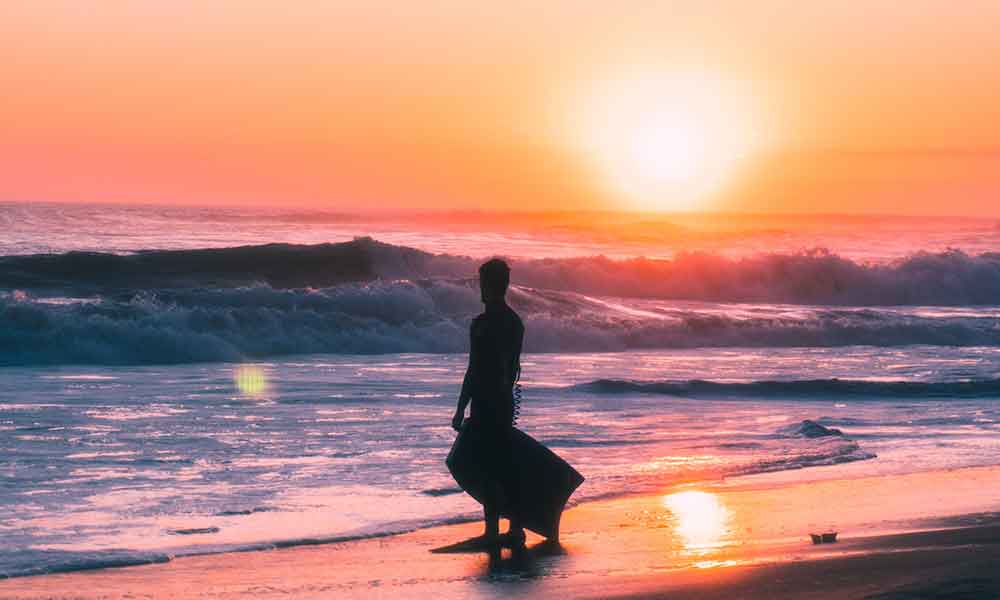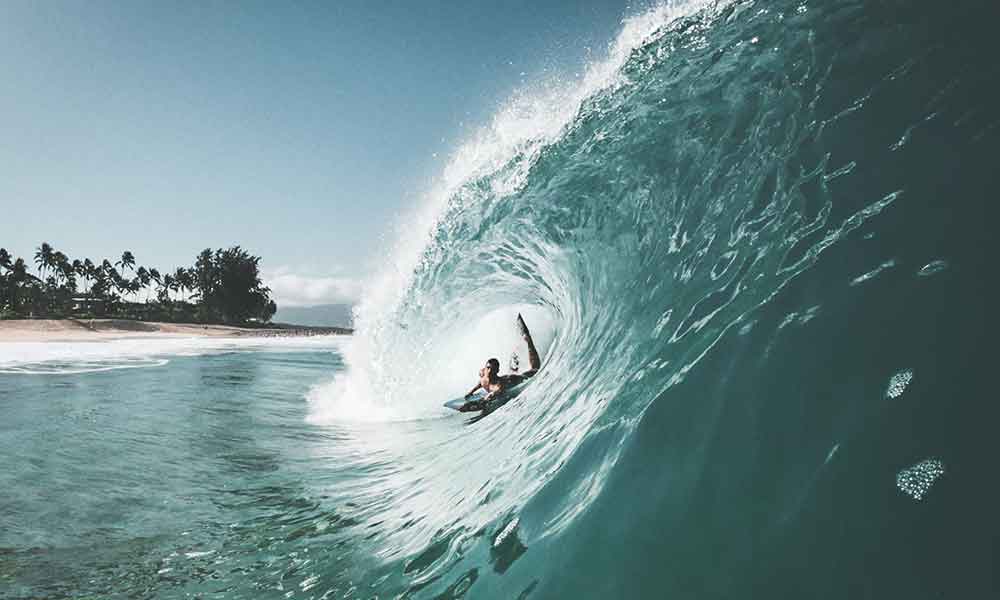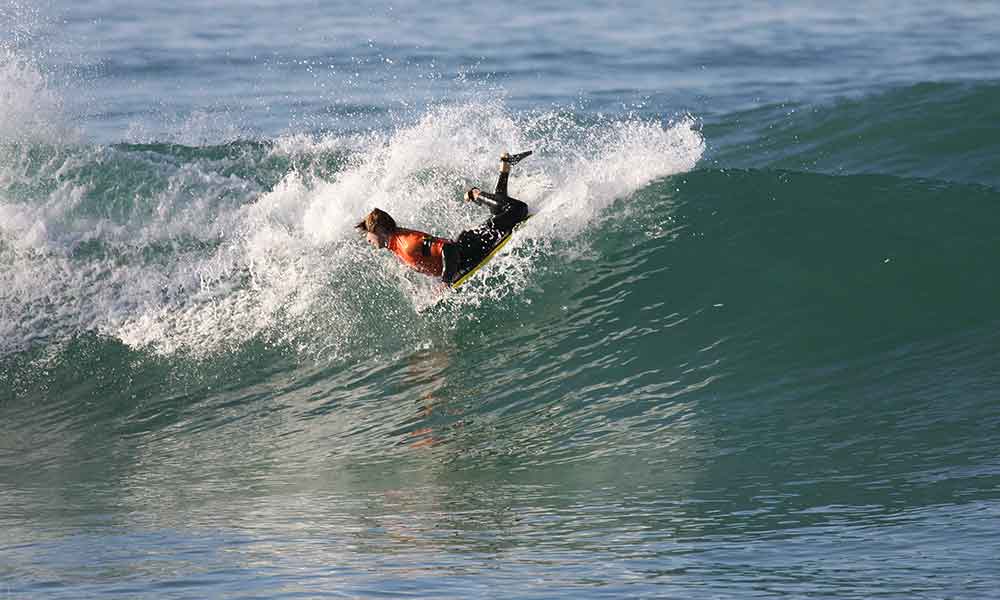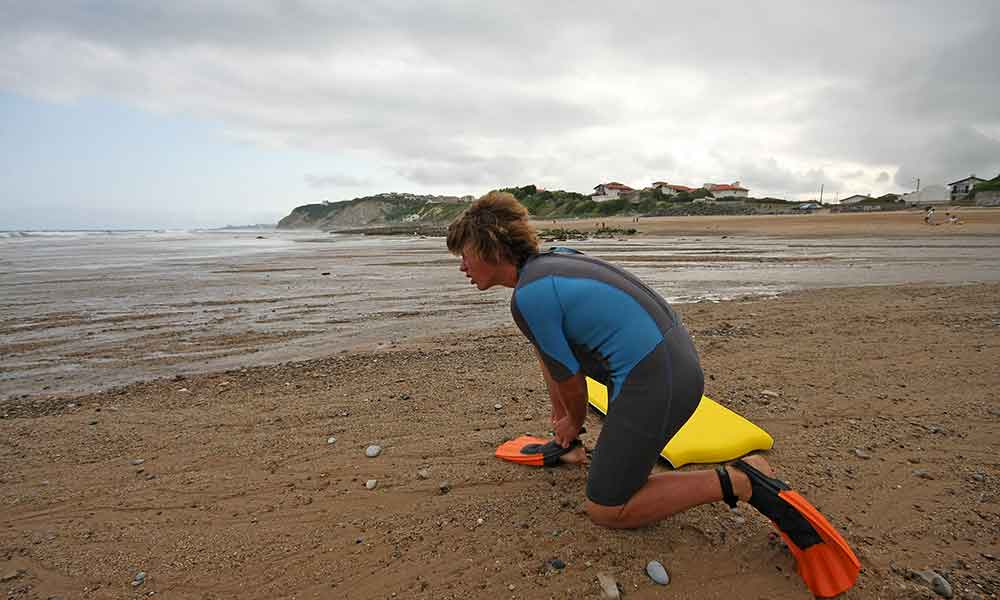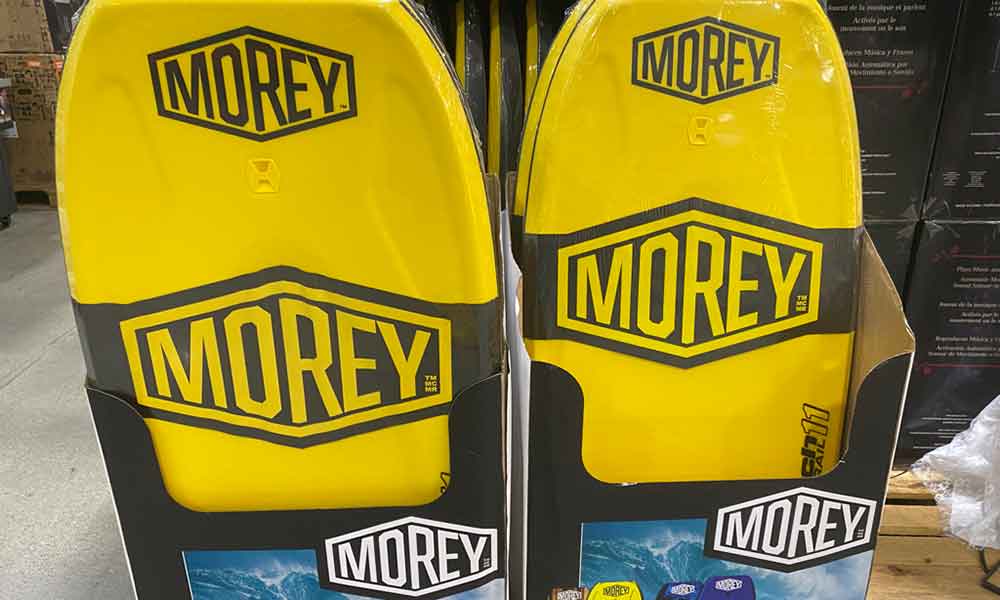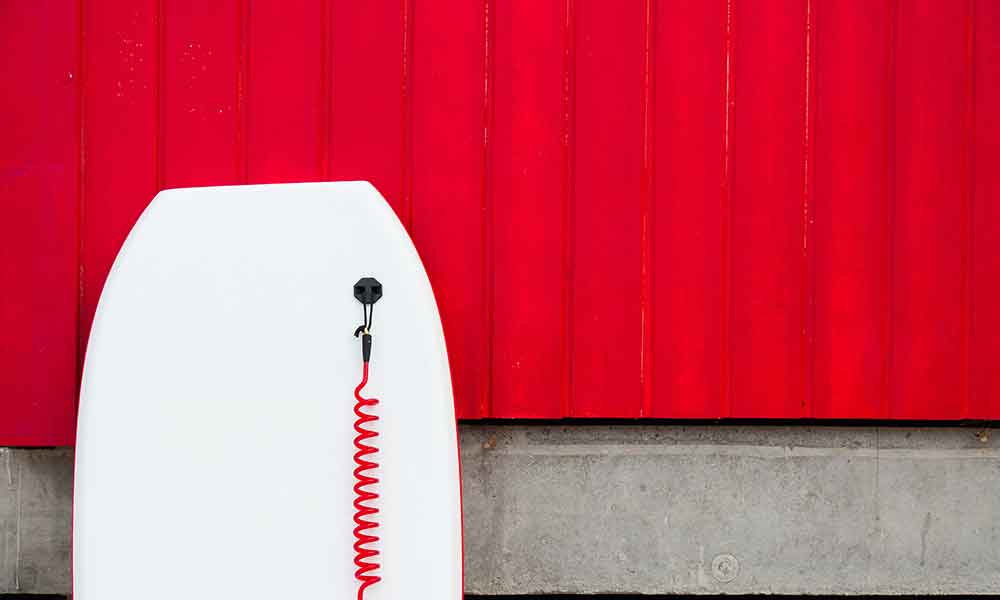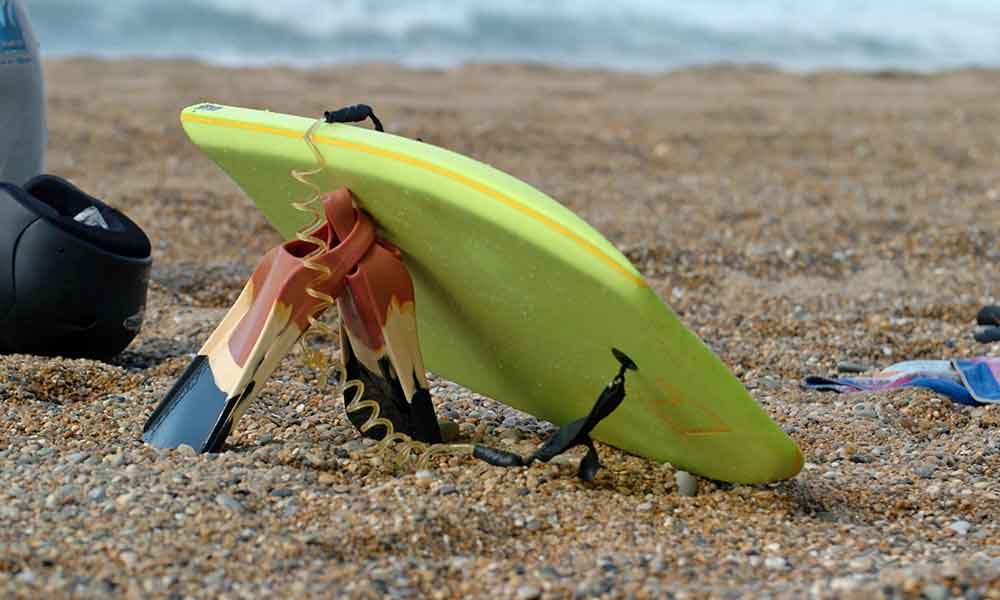A bodyboard and the ocean—that’s all you need to experience bodyboarding.
But with so many different boards to choose from, which one is right for you?
Everything from the board length to how it handles water temperature should be considered when buying a bodyboard, so let’s take a look and see if we can find the right board for you.
Types of Bodyboard
There are a few different types of bodyboards to choose from. These boards range in size, flexibility, durability, and performance, and there are a few things to consider when looking for the perfect board:
Materials
Bodyboards typically feature a foam core and a protective outer layer. The core provides the buoyancy while the outer layer stops it from becoming waterlogged.
There are four types of board:
Polystyrene Bodyboards
Polystyrene boards are cheap and light. They are also quite fragile, although the more expensive boards use stronger materials to improve durability.
Known colloquially as “snappers”, these boards have come under a lot of scrutiny in recent years due to their carbon footprint. They are the least eco-friendly of all bodyboards as they are very temperamental, can’t be recycled, and are often discarded within months of being purchased.
If you’re looking for a cheap beginner board, whether for yourself or your kids, these polystyrene bodyboards are a good option. If you want something sturdier that will last for many years, they simply won’t suffice.
Polyethylene Bodyboards
These boards are made from high-density polyethylene and are both lightweight and strong. May polyethylene boards feature two stringers and are capable of delivering great flex even in extremely cold water.
EVA Foam Bodyboards
EVA foam bodyboards are ideal for beginner and intermediate riders, but they can vary in quality and ability, with some better suited for more advanced riders. These foam boards are very durable and flexible.
Combined Foam Bodyboards
Combined foam boards are some of the most advanced and expensive on the market. They are constructed from a mixture of materials in an effort to provide optimal levels of flex, control, stability, and durability.
Experienced riders can pay for their own custom boards, working with the shaper to create something that matches their preferences and style.
Bodyboard Sizes
Bodyboards typically range from 33″ to 46″ in length, providing more or less surface area and impacting everything from balance and comfort to wave riding ability.
Smaller Boards vs Larger Boards
The smallest size for adult bodyboarders is around 38″, as anything smaller than this is better suited for kids.
Your height and weight are the main factors here. If you’re too tall, the board won’t cover enough of your body and provide the balance that you need. If you’re too heavy, it will sit lower in the water and lack buoyancy.
On the flip side, you don’t want a board that covers most of your body and legs. You should be kicking with your legs not paddling with your arms. It should also be light enough to sit slightly below the surface of the water.
Bigger boards will handle better in smaller surf while short and thin boards will give you more speed when catching big waves.
Bodyboard Tails
There aren’t as many bodyboard tail designs as there are with surfboards. In fact, there are only two main options, as well as a couple of variants, and your preferred tail shape will depend on a few factors.
Crescent Tail Board
The crescent tail design is the most common tail design seen in bodyboards. It was first introduced on the Morey Boogie Board and has remained popular ever since.
The crescent delivers a smoother ride and offers a lot of stability. It is still used on Morey Boogie Boards and tends to be favored by drop-knee riders.
Clipped Crescent Tail Board
The clipped crescent tail is a variation on the classic crescent design that uses squared edges instead of rounded ones. It doesn’t have as much hold as the traditional crescent but it’s great for maneuverability.
Bat Tail Board
The bat tail was developed by Mike Stewart and was so named because of its resemblance to Batman’s mask.
It’s a little looser and quicker than the crescent due to the reduced drag. The lower stability might prove problematic for some riders and is one of the reasons the crescent shape remains the most popular choice.
Flat Bat Tail Board
The flat bat tail combines elements of both the crescent and the bat tail and is very popular among experienced drop-knee riders.
Bodyboard Rails
The rails are the edges of the bodyboard. They are very important, as they define how easy the board is to turn and how it responds in the water.
There are two types of bodyboard rail designs: the 50/50 and the 60/40. These ratios refer to the slope of the rails and the 60/40 is by far the most popular.
The 60/40 is better suited for big waves and gives you a lot of control in harsh conditions.
The 50/50 offers speed and control in weaker waves.
Bodyboard Accessories
Bodyboard accessories are the extra items that you may or may not need when bodyboarding. They don’t necessarily impact how the board moves and feels, but they could make your life easier.
Wetsuit
A wetsuit is a must for cold-weather boarding and should be worn even in the summer.
Wetsuits are available in various thickness levels to suit everything from the mildest summer days to the coldest winter nights.
The ideal thickness will depend on everything from your location to the seasons that you’ll be riding. If the weather is hot and you don’t think that a wetsuit is necessary, consider investing in a spring suit or a rash guard. These items of clothing will protect your skin against chafing and sun damage while also providing some protection against cold air and water.
Board Bag
A board bag is a padded bag into which you place your board. It’s a great option for protecting your board during storage and is essential for travel.
It doesn’t take much to damage one of these boards, and if it’s dinged or cracked, it’ll start to allow moisture inside and could cause serious problems weeks down the line. A board bag will reduce the risk of such damage while also protecting against harmful UV rays.
Leash
A leash connects your wrist/bicep to your board. If you wipe out, the board will never be too far away, meaning you won’t waste time scrambling to get it back and it won’t cause problems for other boarders.
Many commercial bodyboards, including the ones sold on Amazon, come with detachable leashes. Some of them are also bundled with free board bags.
Swim Fins
Swim fins are how you propel yourself forward. They are arguably more of a necessity than any of the accessories above and are worn by most bodyboarders.
There are many types of fins out there, but they are very similar with regard to the materials they’re made from and the benefits they provide.
How to Choose the Best Bodyboard for You
The information above can help you to find the perfect bodyboard for your needs.
Here’s a quick summary to help you out:
- Bigger boards are better for generating speed in flat conditions.
- Polyethylene boards offer a lot of flex and control; polystyrene boards are very fragile and cheap.
- Crescent tails are more popular and stable; bat tails will give you more speed but will be less forgiving.
- When thinking about board size, focus on your height and weight, as well as your experience.
As far as price is concerned, there are a lot of good entry-level boards out there for less than $60. However, these are often made from cheap materials and aren’t very environmentally friendly. They are also prone to breaking.
If you have a little more cash in your budget, you should look to spend $200 to $300 and opt for a brand like Morey or Custom X, as they use a higher quality core material, aren’t as harsh on the environment, and have boards to suit all types of riders.
Summary: Bodyboard and Boogie Board Types and Styles
The sport that was popularized following the invention of the Boogie Board has experienced a resurgence in the last few years. Everyone wants to try their hand at prone surfing, and now that you know the basics, you’re ready to give it a go yourself!

